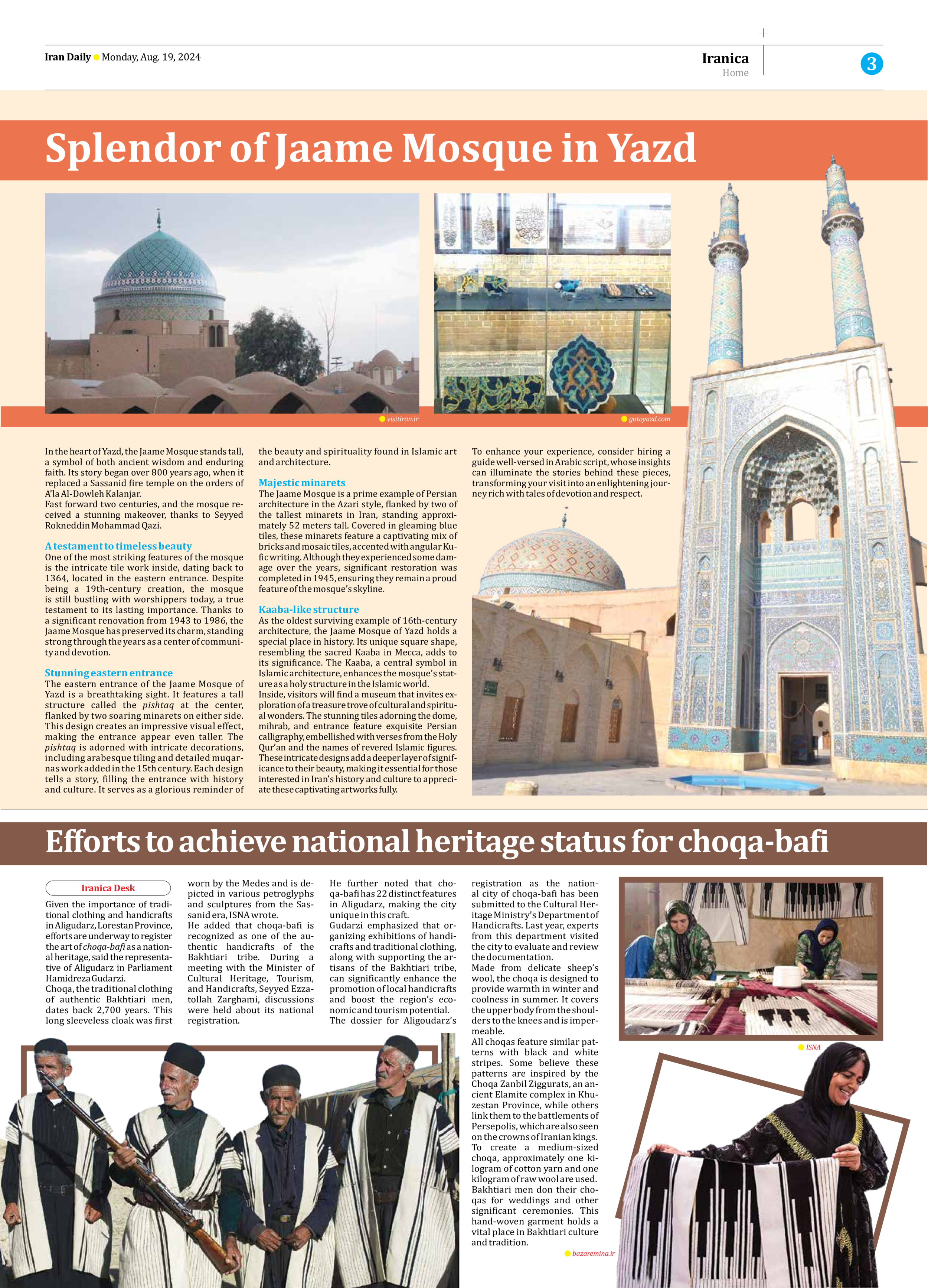
Efforts to achieve national heritage status for choqa-bafi
Given the importance of traditional clothing and handicrafts in Aligudarz, Lorestan Province, efforts are underway to register the art of choqa-bafi as a national heritage, said the representative of Aligudarz in Parliament Hamidreza Gudarzi.
Choqa, the traditional clothing of authentic Bakhtiari men, dates back 2,700 years. This long sleeveless cloak was first worn by the Medes and is depicted in various petroglyphs and sculptures from the Sassanid era, ISNA wrote.
He added that choqa-bafi is recognized as one of the authentic handicrafts of the Bakhtiari tribe. During a meeting with the Minister of Cultural Heritage, Tourism, and Handicrafts, Seyyed Ezzatollah Zarghami, discussions were held about its national registration.
He further noted that choqa-bafi has 22 distinct features in Aligudarz, making the city unique in this craft.
Gudarzi emphasized that organizing exhibitions of handicrafts and traditional clothing, along with supporting the artisans of the Bakhtiari tribe, can significantly enhance the promotion of local handicrafts and boost the region’s economic and tourism potential.
The dossier for Aligoudarz’s registration as the national city of choqa-bafi has been submitted to the Cultural Heritage Ministry’s Department of Handicrafts. Last year, experts from this department visited the city to evaluate and review the documentation.
Made from delicate sheep’s wool, the choqa is designed to provide warmth in winter and coolness in summer. It covers the upper body from the shoulders to the knees and is impermeable.
All choqas feature similar patterns with black and white stripes. Some believe these patterns are inspired by the Choqa Zanbil Ziggurats, an ancient Elamite complex in Khuzestan Province, while others link them to the battlements of Persepolis, which are also seen on the crowns of Iranian kings.
To create a medium-sized choqa, approximately one kilogram of cotton yarn and one kilogram of raw wool are used.
Bakhtiari men don their choqas for weddings and other significant ceremonies. This hand-woven garment holds a vital place in Bakhtiari culture and tradition.







